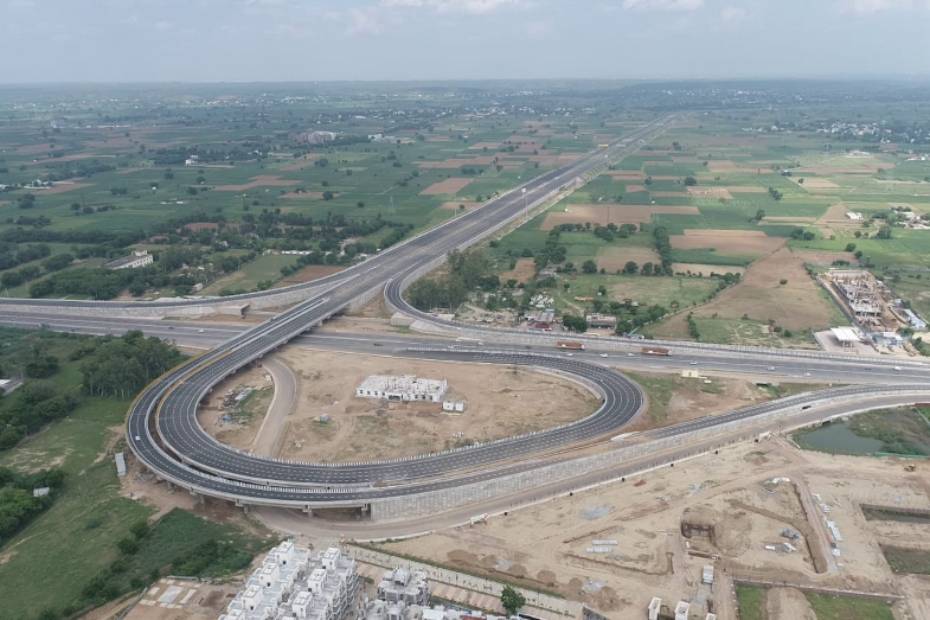7 Things You Need To Know About The Upcoming Mumbai-Delhi Expressway
Modified On Jan 31, 2023 07:21 PM By Tarun
- Write a comment
The new expressway connecting Delhi and Mumbai will primarily allow commuters to save about 12 hours of travel time, but it has got more to it than that

The Union government is set to inaugurate the Sohna-Dausa section of the Mumbai-Delhi Expressway on February 12. The section will be functional by the end of February and will bring down the commute time between Delhi and Jaipur to TWO HOURS!
The bigger picture though will be the reduction of the Delhi to Mumbai travel time, which currently takes around 24 hours, by half once the expressway is full operational. It will be one of the longest and most significant expressways in the country, starting from the Delhi-Noida-Delhi (DND) flyway to Palghar district in Maharashtra and here are seven things you should know about the new Delhi-Mumbai expressway:
High Top Speed

Usually, most expressways in India have a restricted speed limit of 100kmph, but the new Delhi-Mumbai one will allow up to 120kmph. While an extra 20kmph may not seem like much on paper, being able to lawfully maintain such speeds makes a big difference over long journeys as it reduces the overall travel time.
Eight Lane Layout, Can Be Stretched To More
The expressway will boast four lanes on each side, which can be further stretched to six lanes each side, if needed. Two lanes will be allocated for the exit and entry points along the route.
Travel Time Slashed By Half!

Currently, it takes a little over 24 hours to travel from Mumbai to Delhi by road, a distance of around 1,500km depending on the exact destination and route you take. The new 1,350km expressway plans to shorten the time to 12 hours and reduce the distance by around 130km. The current highway route for Mumbai to Delhi passes different types of roadways and varying scales of populated areas. It includes a mix of national highways, State highways, two-lane roads, and even ghats. This new expressway is meant to enable users to maintain a higher speed (within the limit) for most of the journey, which is a key element in reducing travel time by more than half.
Connects Major Cities Along The Way

Besides Mumbai and Delhi, the new expressway will also connect to Gurugram, Ranthambore, Mewat, Ratlam, Kota, Vadodara, Surat and many other cities. It will pass through the States of Haryana, Rajasthan, Madhya Pradesh, Gujarat and Maharashtra. This should also benefit several businesses and facilitate easier travel between these cities.
No Entry Toll, Only Exit Toll
Unlike most toll roads in India, there won’t be any toll at the entry point of this expressway. Instead, the toll will be decided as per the distance travelled on it and the toll booths will be installed at every exit. For example, if you get off the expressway to head for Surat, your toll will be collected at the exit booth and not when you join the expressway.. This approach to collecting toll charges will also reduce the traffic snarls often seen at the toll entryways.
While the exact toll rates will likely be confirmed once the expressway is operational, it is claimed to be calculated at 65 paise per kilometre, which would come to less than Rs 900 for the full journey from Delhi to Mumbai. In comparison, the Agra-Lucknow expressway charges Rs 2.45 per kilometre as toll fee.
Green Overpasses Through Major Forest Reserves
The government is also working to ensure that the wildlife is not entirely displaced and or disturbed by this expressway. At every three and a half kilometre intervals, there will be a green overpass, when passing through such areas. These are structures that would allow wildlife to safely cross over the expressway, which would look like a series of small tunnels to road users.
The expressway will also go through important ecological zones like the Ranthambore National Park, Boondi Ramgarh Tiger Reserve and Kota Mukundra Hills Tiger Reserve. The world’s second largest green overpass will be constructed between Boondi and Sawai Madhopur.
Also Read: Pay A Fair Price For Car Insurance With These Plans And Add-on Schemes
Rest, Medical And Food Stops All The Way

The Delhi-Mumbai expressway will feature trauma centres every 100 kilometres, to ensure proper care for people involved in an accident or in need of any medical attention. Every 50 kilometres, there will be rest and food centres, on either side. The official number of rest centres stands at 93, which is nearly three times more than just two stops (one either side) every 50km for the 1,350km stretch.
1 out of 1 found this helpful















